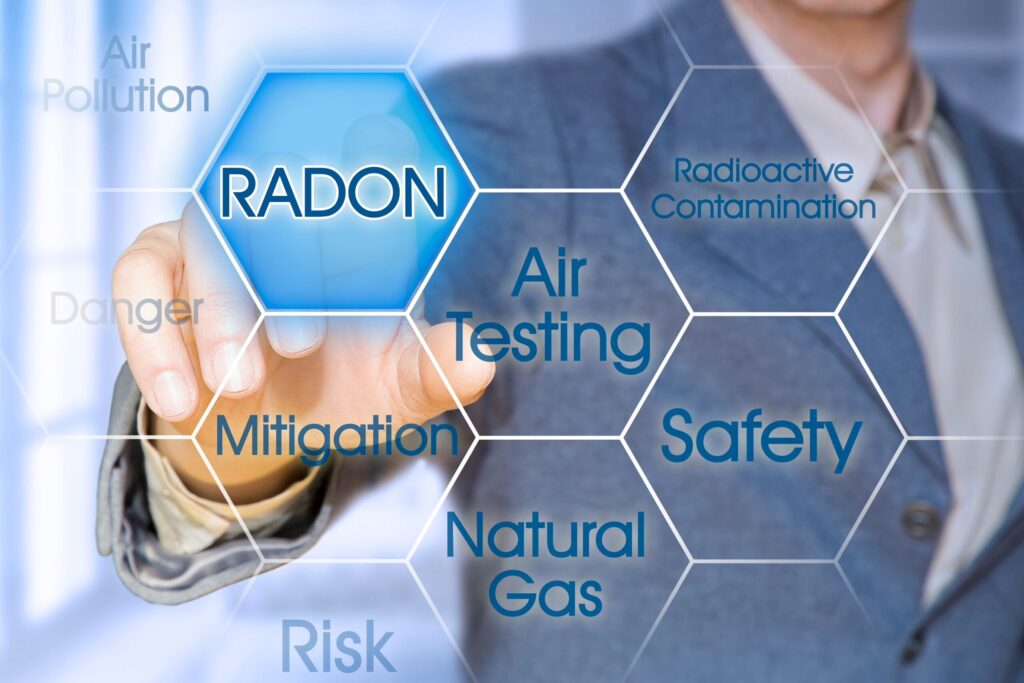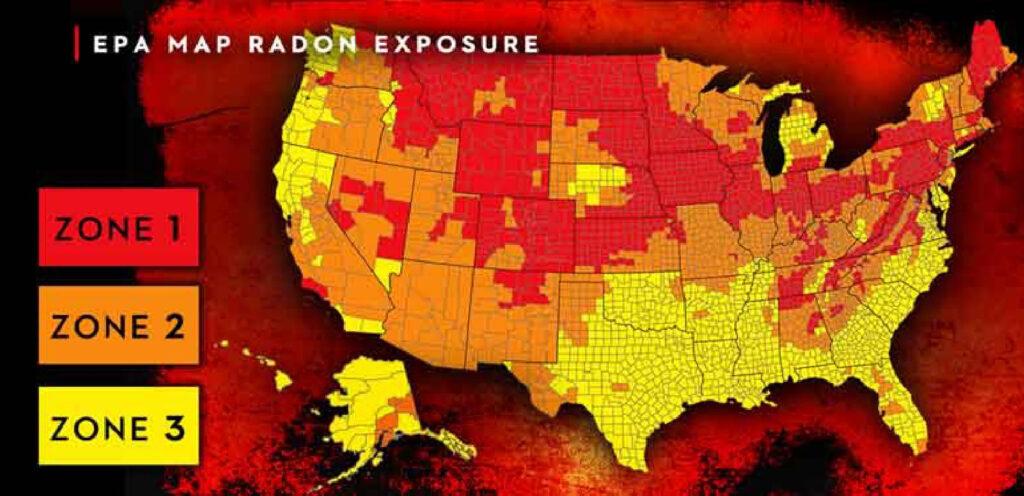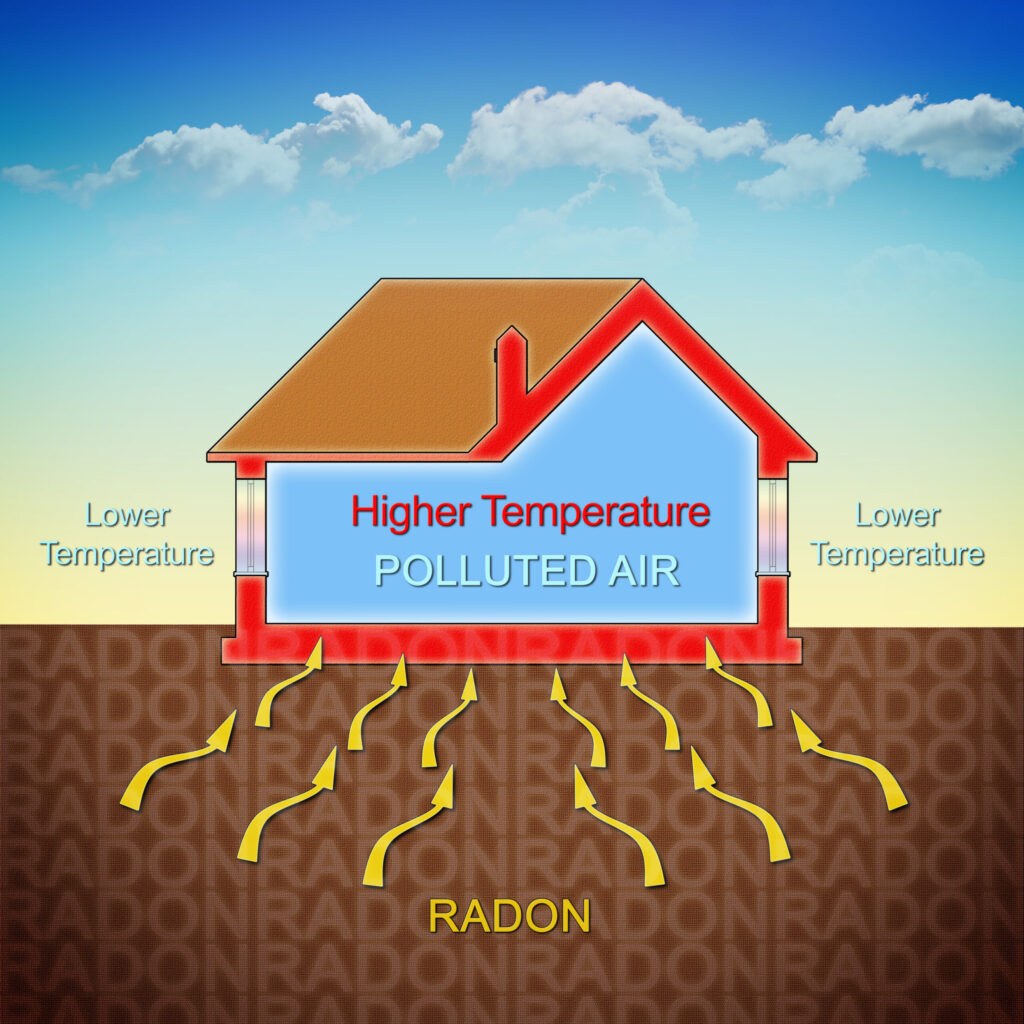RADON TESTING - RADON MITIGATION
The Surgeon General has issued a health advisory about Radon. Radon gas is the 2nd leading cause of lung cancer in the United States. Breathing in radon gas causes health risks to you and your family. The EPA has determined the radon levels in each county of each state. There are three levels of exposure identified by yellow, orange and red. Yellow counties have the least risk for exposure. Red counties have the highest risk for exposure. There are no symptoms from radon exposure. Radon gas is odorless and invisible. Titan’s Pros can test your property for Radon. To be Safe, call Titan to install a Radon Mitigation system.

Titan offers expert Radon Testing and Radon Mitigation services in Kansas City and throughout the Midwest region. We are certified through the American Association of Radon Scientists & Technologists National Radon Proficiency Program. We work with both residential and commercial clients throughout the greater Kansas City area.

Our clients include commercial real estate developers, property management firms, insurance companies, architects, and engineers. We often provide Radon, Asbestos and Lead-Paint Testing for large multifamily developments and apartment buildings. We PARTNER with engineering and science firms performing Property Condition Assessments (PCA) and Phase 1 Environmental Site Assessments (ESA). Property Condition Reports (PCR) or Commercial Building Inspections are performed by following the ASTM E2018 Standard. The National Engineering and Environmental Due Diligence Association (NEEDDA) was formed to improve the practice of engineering and environmental due diligence.
Radon Testing Services
Radon comes from the decay of uranium. Uranium is in our soil, rock, and water throughout the U.S. As uranium breaks down, it releases radon into the air. It seeps through cracks in your foundation, resulting in high indoor radon levels. You are likely to get the most exposure where you live, where you spend the most time. One (1) out of fifteen (15) homes in the U.S. is estimated to have elevated radon levels.
Labs measure Radon in picocuries per liter of air (pCi/L). EPA recommends mitigation if radon levels are between 2 and 4 pCi/L. The amount of radon in the air is measured in “picocuries per liter of air,” or “pCi/L.” The U.S. Congress has set a long-term goal that indoor radon levels be no more than outdoor levels; about 0.4 pCi/L of radon is normally found in the outside air. EPA recommends fixing your home if the results of one long term test or the average of two short term tests show radon levels of 4 pCi/L or higher. You also may want to consider fixing if the level is between 2 and 4 pCi/L.
Radon gas is odorless and invisible and the only way to know if your home or building has a radon problem is to test for it.
Radon Mitigation Services
Help is available, Titan can fix your radon problem. We use the ASTM Standard Practice for Installing Radon Mitigation Systems. We follow applicable state/federal regulations. Fixing the problem costs about the same as other residential repairs. High levels of Radon can be reduced to acceptable levels. Elevated Radon levels in most homes are reduced to 2 pCi/L. Some mitigation systems can reduce radon levels by up to 99%. Continued exposure to Radon Gas is preventable.
Titan’s radon testing & mitigation experts are here to help. To be Safe, call Titan to install a Radon Mitigation system.

We serve the Greater Kansas City Metropolitan Area and the local cities and counties outlined below.
Kansas
- Overland Park, Kansas
- Olathe, Kansas
- Shawnee, Kansas
- Lenexa, Kansas
- Leawood, Kansas
- Prairie Village, Kansas
- Merriam, Kansas
- Mission, Kansas
- Fairway, Kansas
- Westwood, Kansas
- Mission Hills, Kansas
- Gardner, Kansas
- Lawrence, Kansas
- Kansas City, Kansas
- Eudora, Kansas
- Spring Hill, Kansas
- Paola, Kansas
- Edgerton, Kansas
- Topeka, Kansas
- Leavenworth, Kansas
- Ottawa, Kansas
- Baldwin City, Kansas
- Lansing, Kansas
Missouri
- Kansas City, Missouri
- Independence, Missouri
- Lee’s Summit, Missouri
- Blue Springs, Missouri
- Liberty, Missouri
- Ray town, Missouri
- Gladstone, Missouri
- Grandview, Missouri
- Belton, Missouri
- Ray more, Missouri
- Grain Valley, Missouri
- Kearney, Missouri
- Smithville, Missouri
- Platte City, Missouri
- Pleasant Hill, Missouri
- Oak Grove, Missouri
- Bonner Springs, Missouri
- Parkville, Missouri
- Greenwood, Missouri
- Peculiar, Missouri
- North Kansas City, Missouri
- Sugar Creek, Missouri
- Riverside, Missouri
- Lake Botswana, Missouri
Surrounding Counties:
- Jackson County, Missouri
- Johnson County, Kansas
- Clay County, Missouri
- Wyandotte County, Kansas
- Cast County, Missouri
- Platte County, Missouri
- Leavenworth County, Kansas
- Miami County, Kansas
- Douglas County, Kansas
- Shawnee County, Kansas
